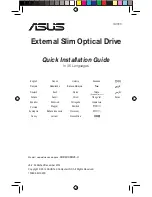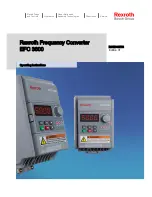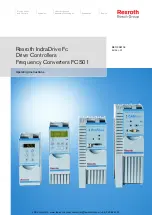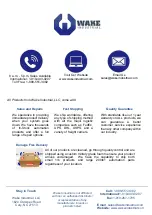
7-2
GV3000/SE Operator Interface Module (OIM) User Guide, Version 2.0
The fault screen tells you which fault occurred - in this example, the HIGH LINE
VOLTAGE fault. If more faults occur, they are displayed after
is pressed to clear
the first fault.
When an alarm occurs:
•
the alarm or fault indicator turns on.
•
alarms are not logged.
•
an alarm message is displayed on the OIM screen, such as the one shown in figure
7.2.
The alarm message screen tells you which alarm occurred - in this example, the LOW
AC INPUT LINE alarm. Press
to clear the screen.
If a fault and an alarm occur at the same time, the fault message is displayed. If
multiple faults and alarms have occurred, you can review them one at a time using the
Fault and Alarm Menus.
To identify the problem when a fault or alarm occurs, use the Fault or Alarm Menu or
the tables provided in chapter 5 of the software I/M. The screens in the menus and the
tables give the probable cause and corrective action to take when a fault or alarm
occurs.
Tables 7.3 and 7.4 in this chapter cross-reference the alarm and fault messages you
will see on the OIM with the fault and alarm codes as they are listed in the software I/M
and displayed on the front panel keypad/display.
When a fault is corrected, you must reset the faults before starting the drive. Alarms
are automatically reset when the problem is corrected.
Figure 7.2 – Example of an Alarm Screen
Summary of Contents for Reliance electric GV3000/SE
Page 6: ...IV GV3000 SE Operator Interface Module OIM User Guide Version 2 0 ...
Page 8: ...VI GV3000 SE Operator Interface Module OIM User Guide Version 2 0 ...
Page 12: ...1 4 GV3000 SE Operator Interface Module OIM User Guide Version 2 0 ...
Page 20: ...2 8 GV3000 SE Operator Interface Module OIM User Guide Version 2 0 ...
Page 87: ...A 18 GV3000 SE Operator Interface Module OIM User Guide Version 2 0 ...
Page 101: ...B 14 GV3000 SE Operator Interface Module OIM User Guide Version 2 0 ...
Page 111: ......
















































